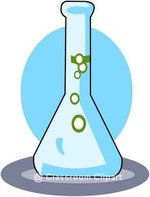Europium
|
|
| ||||||||||||||||||||||||||||||||||
| General | ||||||||||||||||||||||||||||||||||
|---|---|---|---|---|---|---|---|---|---|---|---|---|---|---|---|---|---|---|---|---|---|---|---|---|---|---|---|---|---|---|---|---|---|---|
| Name, Symbol, Number | Europium, Eu, 63 | |||||||||||||||||||||||||||||||||
| Chemical series | Lanthanides | |||||||||||||||||||||||||||||||||
| Group, Period, Block | _, 6, f | |||||||||||||||||||||||||||||||||
| Density, Hardness | 5244 kg/m3, no data | |||||||||||||||||||||||||||||||||
| Appearance | silvery white Missing image Eu,63.jpg | |||||||||||||||||||||||||||||||||
| Atomic properties | ||||||||||||||||||||||||||||||||||
| Atomic weight | 151.964(1) u | |||||||||||||||||||||||||||||||||
| Atomic radius (calc.) | 185 (231) pm | |||||||||||||||||||||||||||||||||
| Covalent radius | no data | |||||||||||||||||||||||||||||||||
| van der Waals radius | no data | |||||||||||||||||||||||||||||||||
| Electron configuration | [Xe]6s24f7 | |||||||||||||||||||||||||||||||||
| e-s per energy level | 2, 8, 18, 25, 8, 2 | |||||||||||||||||||||||||||||||||
| Oxidation states (Oxide) | 3 (mildly basic) | |||||||||||||||||||||||||||||||||
| Crystal structure | Cubic body centered | |||||||||||||||||||||||||||||||||
| Physical properties | ||||||||||||||||||||||||||||||||||
| State of matter | solid (__) | |||||||||||||||||||||||||||||||||
| Melting point | 1099 K (1519 ?F) | |||||||||||||||||||||||||||||||||
| Boiling point | 1800 K (2781 ?F) | |||||||||||||||||||||||||||||||||
| Molar volume | 28.97 cm3/mol | |||||||||||||||||||||||||||||||||
| Heat of vaporization | 143.5 kJ/mol | |||||||||||||||||||||||||||||||||
| Heat of fusion | 9.21 kJ/mol | |||||||||||||||||||||||||||||||||
| Vapor pressure | 144 Pa at 1095 K | |||||||||||||||||||||||||||||||||
| Velocity of sound | no data | |||||||||||||||||||||||||||||||||
| Miscellaneous | ||||||||||||||||||||||||||||||||||
| Electronegativity | 1.2 (Pauling scale) | |||||||||||||||||||||||||||||||||
| Specific heat capacity | 180 J/(kg·K) | |||||||||||||||||||||||||||||||||
| Electrical conductivity | 1.12 MS/m | |||||||||||||||||||||||||||||||||
| Thermal conductivity | 13.9 W/(m?K) | |||||||||||||||||||||||||||||||||
| 1st ionization potential | 547.1 kJ/mol | |||||||||||||||||||||||||||||||||
| 2nd ionization potential | 1085 kJ/mol | |||||||||||||||||||||||||||||||||
| 3rd ionization potential | 2404 kJ/mol | |||||||||||||||||||||||||||||||||
| 4th ionization potential | 4120 kJ/mol | |||||||||||||||||||||||||||||||||
| Most stable isotopes | ||||||||||||||||||||||||||||||||||
| ||||||||||||||||||||||||||||||||||
| SI units & STP are used except where noted. | ||||||||||||||||||||||||||||||||||
Europium is a chemical element in the periodic table that has the symbol Eu and atomic number 63. It was named after the continent Europe.
| Contents |
Notable characteristics
Europium is the most reactive of the rare earth elements; it quickly oxidizes in air, and resembles calcium in its reaction with water. Like other rare earths (with the exception of lanthanum), europium ignites in air at about 150 ?C to 180 ?C. It is about as hard as lead and quite ductile.
Applications
There are no commercial applications for europium metal, although it has been used to dope some types of plastics to make lasers. Due to its ability to absorb neutrons, it is also being studied for use in nuclear reactors. europium oxide (Eu2O3) is widely used as a red phosphor in television sets, and as an activator for yttrium-based phosphors. It is also being used as an agent for the manufacture of fluorescent glass. A salt of Europium is a component of the newer phosphorescent powders and paints, some of which will glow for days after a few minutes of exposure to light.
History
Europium was first found by Paul ɭile Lecoq de Boisbaudran in 1890, who obtained basic fraction from samarium-gadolinium concentrates which had spectral lines not accounted for by samarium or gadolinium; however, the discovery of europium is generally credited to French chemist Eug讥-Antole Demar硹, who suspected samples of the recently discovered element samarium were contaminated with an unknown element in 1896 and who was able to isolate europium in 1901.
Pure europium metal was not isolated until recent years.
Occurrence
Europium is never found in nature as the free element; however, there are many minerals containing europium, with the most important sources being bastnasite and monazite. Europium has also been identified in the spectra of the sun and certain stars.
Compounds
Europium compounds include:
Isotopes
Naturally occurring europium is composed of 2 stable isotopes, 151-Eu and 153-Eu, with 153-Eu being the most abundant (52.2% natural abundance). 35 radioisotopes have been characterized, with the most stable being 150-Eu with a half-life of 36.9 years, 152-Eu with a half-life of 13.516 years, and 154-Eu with a half-life of 8.593 years. All of the remaining radioactive isotopes have half-lifes that are less than 4.7612 years, and the majority of these have half lifes that are less than 12.2 seconds. This element also has 8 meta states, with the most stable being 150m-Eu (t? 12.8 hours), 152m1-Eu (t? 9.3116 hours) and 152m2-Eu (t? 96 minutes).
The primary decay mode before the most abundant stable isotope, 153-Eu, is electron capture, and the primary mode after is beta minus decay. The primary decay products before 153-Eu are element Sm (samarium) isotopes and the primary products after are element Gd (gadolinium) isotopes.
Precautions
The toxicity of europium compounds has not been fully investigated, but there are no clear indications that europium is highly toxic compared to other heavy metals. The metal dust presents a fire and explosion hazard. Europium has no known biological role.
References
- Los Alamos National Laboratory – Europium (http://periodic.lanl.gov/elements/63.html)
External links
- WebElements.com – Europium (http://www.webelements.com/webelements/elements/text/Eu/index.html)
- EnvironmentalChemistry.com – Europium (http://environmentalchemistry.com/yogi/periodic/Eu.html)
- It's Elemental – Europium (http://education.jlab.org/itselemental/ele063.html)


